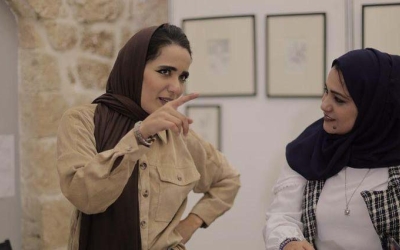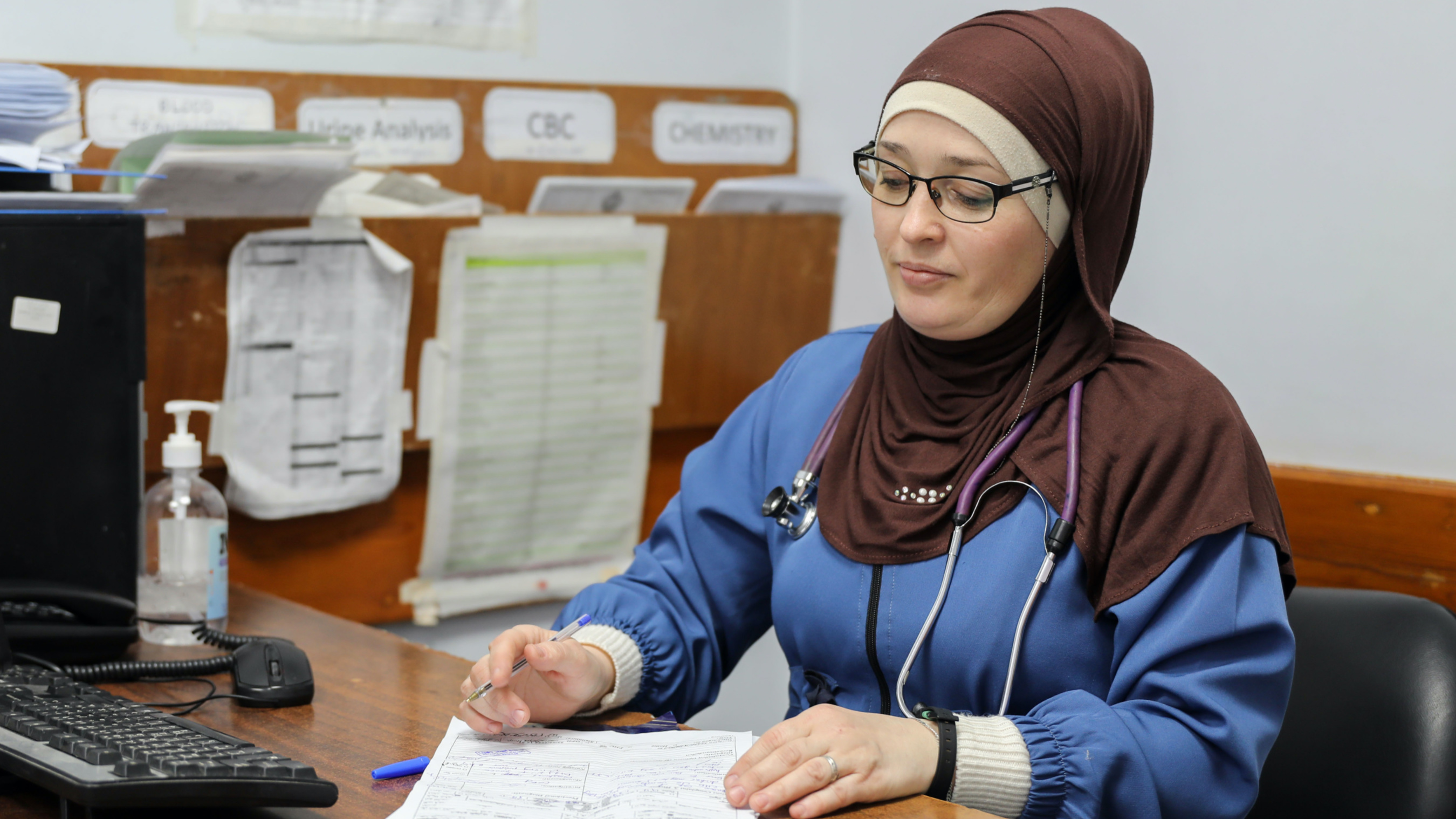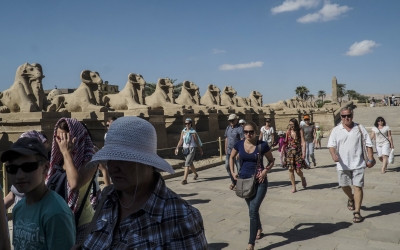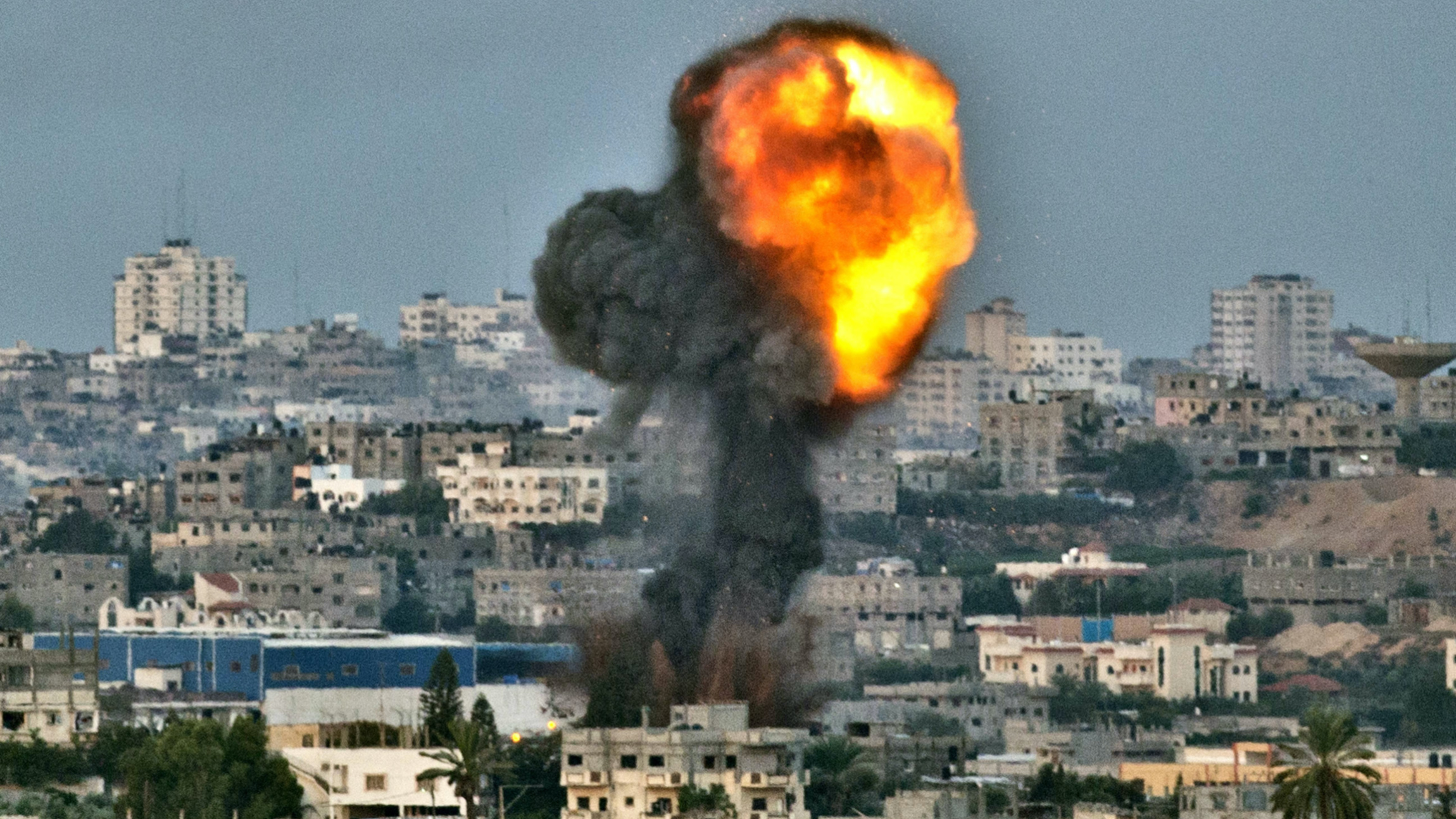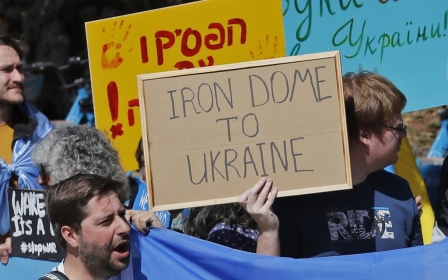Meet the Ukrainian woman who fled Russia's invasion for the Gaza Strip
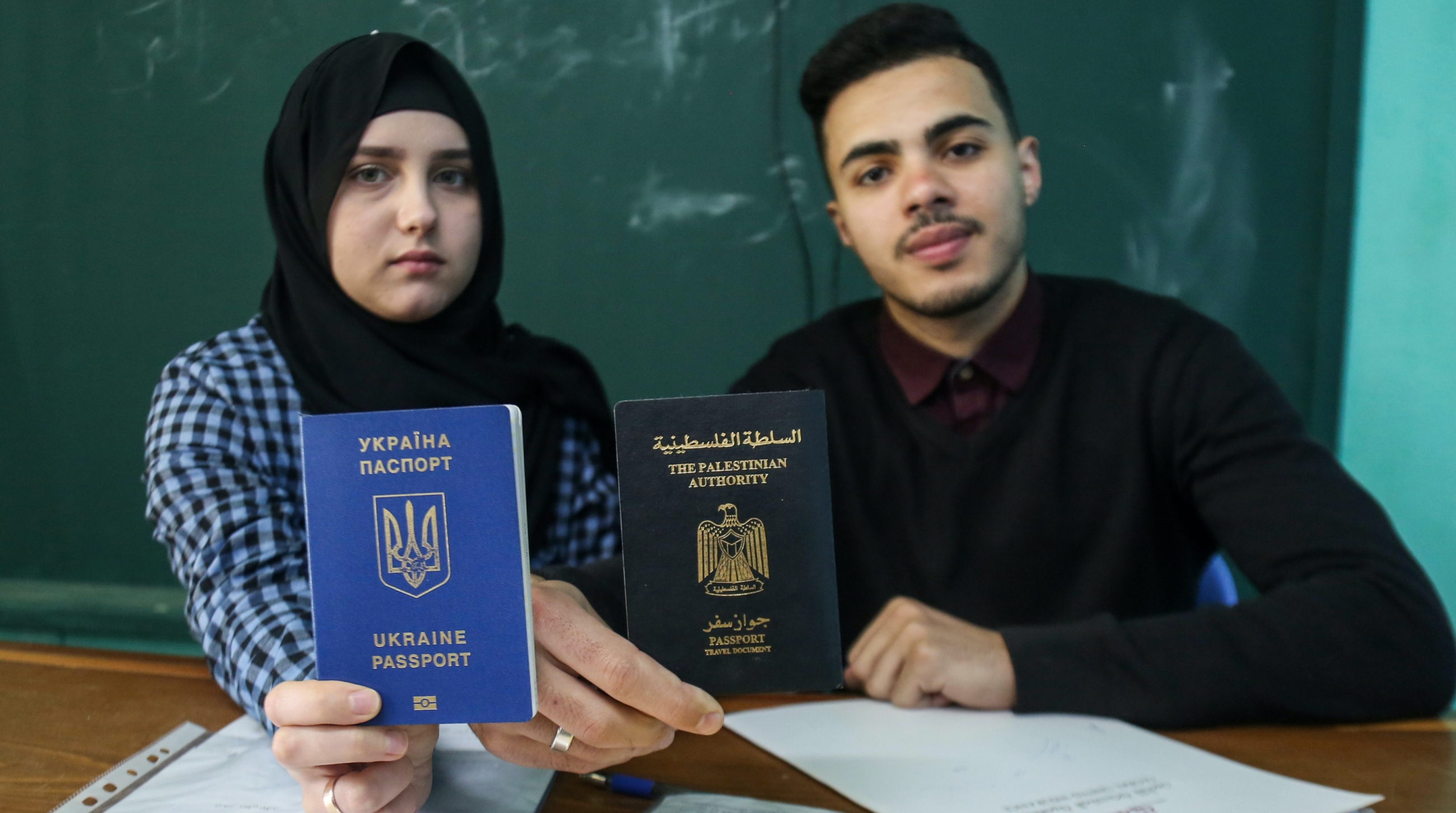
Before Victoria Roger got married to a Palestinian two years ago, she did not imagine that she would seek refuge from Russian attacks on Ukraine in the war-torn Gaza Strip.
The 21-year-old woman decided to leave her city, Vinnytsia, in west-central Ukraine, with her Palestinian husband, Ibrahim Saidam, at the beginning of March, a few days after Russia launched its war on her country.
After a “long exhausting journey”, the couple managed to arrive in the blockaded enclave, home to over two million residents.
“The bombing intensified dramatically, and it was becoming closer and closer. We heard massive explosions and thought that it was too dangerous to stay in our home,” Roger told Middle East Eye.
“We agreed that we had to flee to Gaza and take refuge there until the war comes to an end. We knew that Gaza can also be a dangerous place, but at least these days it remains calmer than my city.”
When the bombing started, Roger said her husband immediately knew what to do because he “has experience in wars”.
“We woke up to the sound of sirens in our city. Ibrahim had already bought enough food a week earlier and managed to comfort me when I was scared. He said he was 'a war graduate',” she laughed, referring to Israel’s major military offensives launched on the coastal enclave since 2008.
From Ukraine to a refugee camp
“The day when we decided to leave was horrible. We first crossed the borders to Romania, then travelled to Cairo to begin another exhausting journey to Gaza, until we finally arrived on 3 March.”
Roger, who hopes to return to Ukraine when the war is over, currently lives with her in-laws in the Bureij refugee camp, in the central Gaza Strip.
Although living in a refugee camp can be challenging, Roger is enjoying the welcoming atmosphere of her family-in-law.
'We woke up to the sound of sirens in our city. Ibrahim managed to comfort me when I was scared. He said he was a war graduate'
- Victoria Roger, Ukrainian refugee
“Before I came to Gaza, I already had an idea about how bad the situation is and that people here are facing harsh living conditions. I cannot say that I am surprised to see what life is like here, but apparently it is very different from my home country,” she said.
“But I was always curious to visit and see the city where my husband was born and lived. We wanted to come to Gaza even before the war on Ukraine, but it was very hard due to the severe restrictions imposed on its border crossings.”
The couple met three years ago in an English language learning centre in Ukraine and got married a few months later. Two months after their marriage, Roger converted to Islam.
“Since we got married, I kept preparing her for what she would see in Gaza,” Saidam, her husband, said.
“I tried to make the situation look even worse than it actually is so that when she came, she would not see it that bad.”
The fourth-year medical student was planning to visit Gaza along with his wife during the outbreak of the coronavirus pandemic in 2020, but was afraid they would not be able to return to Ukraine if the borders were closed.
“When classes turned online, I told Victoria that it would be a good chance to visit my family in Gaza and she was excited to come and get to know them, but the situation was very challenging and I had many fears,” Saidam, 24, said.
“First, I was afraid the [Rafah] border would be closed and we would not be able to return to continue our studies […] and second, I did not want Victoria to experience the suffering I had to go through on my way out of Gaza.
The Rafah border crossing between Egypt and Gaza remains the main exit point for the majority of the Strip’s residents who wish to travel to Egypt or other countries, as Israel continues to impose tight restrictions on the Erez border crossing, limiting travel to humanitarian cases and workers in Israel.
“I had to sleep at the border crossing and went through a humiliating experience. She couldn't have handled it.”
In 2005, before Israel imposed its blockade on Gaza, an average of 40,000 people entered or exited the Strip per month via the Rafah crossing.
In 2021, around 15,000 people entered or exited through the crossing per month, a “remarkable improvement” over the previous eight years and the highest level of movement since 2013, according to human rights groups, when Egypt imposed border restrictions over the security situation in Sinai. In 2014, the average number of crossings fell to 7,876.
Reflecting on Gaza
Although Roger is the only Ukrainian citizen who fled to the blockaded enclave following the Russian war, there are currently more than 850 adult Ukrainians in Gaza, according to Ashraf al-Nimer, the official in charge of the Ukrainian community in the Strip.
Nimer said the Ukrainian community, composed of around 160-170 families, is the largest foreign community in the Gaza Strip.
“Most of those have already experienced the four Israeli major attacks on the Strip and know the meaning and feeling of war. So they know what their families back in Ukraine are going through,” he told MEE.
Nimer said there are many Palestinians from Gaza married to Ukrainians but there was no need for them to flee the war to Gaza because most European countries have opened safe routes for Ukrainian refugees and their partners, and people with Ukrainian residency permits.
'Most of those [Ukrainians in Gaza] know the meaning and feeling of war. So they know what their families back in Ukraine are going through'
- Ashraf al-Nimer
Nimer, who is also married to a Ukrainian woman, said the first time his wife experienced an Israeli military attack on Gaza she was in complete shock.
“She is very worried about her family back in Ukraine because she knows that war does not differentiate between civilians and fighters,” he said.
“She has been living in Gaza for years and experienced the consequences of the blockade and wars. She had never imagined her family would live a similar experience in Ukraine.”
“There are currently 15 individuals missing from her family, and we do not know if they are still alive or have been killed.”
Nimer added that most Ukrainians in Gaza are either doctors, pharmacists, or hairdressers.
Natalia Hassouni, a Ukrainian endocrinologist in Gaza, said that she has experienced three devastating wars on Gaza, including the 2012 military offensive that was launched a few months after she arrived in the Strip.
“I was shocked because I have never seen or experienced anything like this before. I had two children back then and was frightened of the sounds of bombing and explosions,” the 40-year-old doctor told MEE in broken Arabic.
In November 2012, Israeli forces launched an eight-day attack on the Gaza Strip, killing at least 174 Palestinians, and wounding hundreds of others.
“Since we came to Gaza, we have always been thinking of leaving due to the uncertain conditions and continuous wars and attacks, but my husband cannot leave his elderly parents alone,” Hassouni said.
“I am worried about my family back home and keep calling them every day. We follow the news all day, hoping that no civilians would fall victim [to the war].”
'I do not want my family to go through what we have experienced in Gaza'
- Natalia Hassouni, Ukrainian endocrinologist in Gaza
Hassouni, originally from Kherson in the south of Ukraine, said that she tries to explain to her children the current situation in Ukraine by reflecting on Gaza.
“I live in Beit Lahia in the northern Gaza Strip, a very dangerous place during Israeli wars because it is very close to the border. We are lucky that we have not been harmed by the continuous bombing during the recurrent attacks,” she said.
During Israel’s 51-day operation Protective Edge launched in Gaza in the summer of 2014, Hassouni gave birth to her third child at al-Shifa hospital, and only returned home during a truce.
“I have horrible memories about the previous wars in Gaza, I hope the war on Ukraine ends soon. I do not want my family to go through what we have experienced in Gaza.”
The Gaza Strip has been under a tight Israeli blockade since 2007, and witnessed four devastating military attacks that resulted in the deaths of 4,000 people.
This article is available in French on Middle East Eye French edition.
Middle East Eye propose une couverture et une analyse indépendantes et incomparables du Moyen-Orient, de l’Afrique du Nord et d’autres régions du monde. Pour en savoir plus sur la reprise de ce contenu et les frais qui s’appliquent, veuillez remplir ce formulaire [en anglais]. Pour en savoir plus sur MEE, cliquez ici [en anglais].


